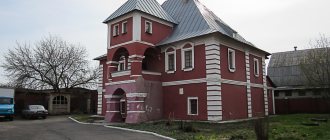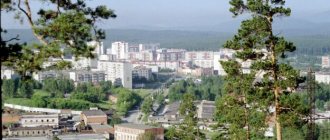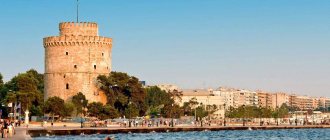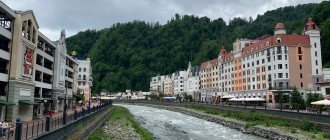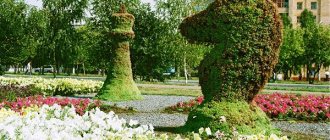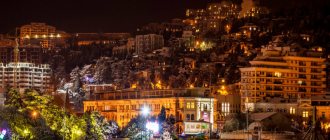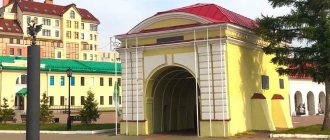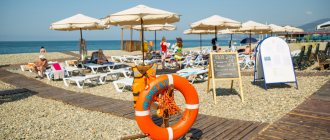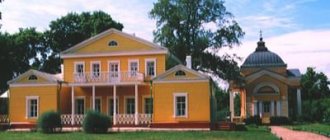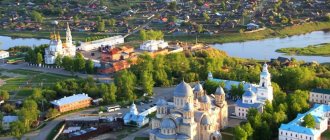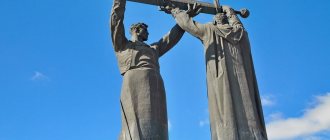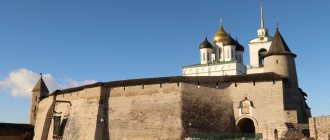Published: 01/27/2019 Category: Author's essay / Stavropol Territory
Caucasian Mineral Waters is a special area within the 26th region of Russia. It is not just administrative, but resort. After all, all the resorts of the Stavropol Territory (health, climatic and ski resorts) are collected on an area of 5,300 square meters. km. KMV is a brand that has been trusted by several generations of residents of the former USSR with their well-being (health and vacation program). And now many people from the CIS countries like to visit here. Faces of nature, “empire”, oriental and temple architecture, the best narzans and 10 trekking routes – this is the very essence of this place.
Region infrastructure
All resorts in the Stavropol Territory are located in the foothills and mountain areas of the Central Caucasus massif. More precisely, in the area of outliers under the general name Pyatigorye, as well as on the rise to the Pastbishchny and Skalisty ridges of the Main Caucasus.
Resort cities of the Stavropol Territory are listed in the following section. But the resort area also includes surrounding areas, in which there are health centers based on the beneficial effects of radon water, as well as protected skiing, hiking and horse riding areas. And they help our health. The entire area is a climatic “health resort” - thanks to the unusually fresh (alpine) air, saturated with the aroma of dozens of useful plants.
Cultural and entertainment facilities
Water park "City of the Sun"
Address: Stavropol Territory, Inozemtsevo village, st. Nikolaevskaya, 2 Phone: Website: https://water-park-65.business.site/ Opening hours: 09:00 – 20:00 Mon-Sun Cost: 1200 rubles – adult ticket, 800 rubles – ticket for children from three years
The City of the Sun water park is one of the most famous in the region. Tourists are provided with a hotel, a restaurant and, of course, the water park itself with various entertainment areas: karaoke, disco club, bowling.
Tersky stud farm
Address: Novotersky village, st. Shkolnaya, 2 Phone: 8 (879) 227-1316 Website: https://terskarabian.com/ru/ Opening hours: 08:00 – 17:00 Mon-Fri, 12:00 – 13:00 – break, Sat, Sun – closed
The Terek breeding stud farm is the largest and most popular enterprise where purebred Arabian horses are raised. It was founded in 1889 by S. A. Stroganov near Mount Snake.
To this day, the stud farm operates according to old traditions. There are also excursions and retreats held here. For example, a show exhibition where visitors can see the best horses. Overnight accommodation is also provided.
Resort cities
Full-fledged resort cities of the Stavropol Territory are represented by 4 agglomerations. They have good transport connections both with the surrounding North Caucasus republics (in the south, west and east), and with the largest railway junction here, the Ministry of Water. It borders the resort area from the north, having access to the Caucasus highway and the airport. In addition to the resort infrastructure and tourist services, the cities have a large number of historical and cultural monuments, museum exhibitions...
Resort settlements have almost grown together. The exception is Kislovodsk. Here is the list:
- Essentuki;
- Pyatigorsk;
- Zheleznovodsk;
- Georgievsk;
- Kislovodsk
Balneological resorts of Stavropol region
Most treatment and prevention centers of the KMS use primarily drinking practice. However, some institutions use healing in baths (using the same radon-saturated water, narzans and mud from Lake Tambukan). There is inhalation and aromatic therapy, mechanotherapy, and a number of alternative medicine methods. The narzans used are divided into 3 types - general, dolomite and sulfate. The first is not very hot and has a reduced level of carbon dioxide, the second has the opposite parameters, and the third resembles the second, but contains more sodium and magnesium sulfates. Narzans heal the gastrointestinal tract, normalize blood pressure and relieve stress. Sometimes they help in other ways.
Essentuki
This city leads the resorts of the Stavropol region, since the government recognized it as the “capital” of the Caucasian Mineral Waters. After all, it meets us first, and is only inferior in size to Pyatigorsk. There are 23 complexes on the territory. We are talking about sanatoriums, as well as guest institutions that include health and preventative services in their activities (with housing and services of different classes). Moreover, the balneological direction is not the only one in their activity at the moment. Essentuki is a sanatorium center located entirely on the plain. However, the recreational part of the agglomeration occupies a green area at some distance from residential areas, fragmentarily located in Kapelnaya Balka. There is a gorgeous park here. Part of the resort town also descends into the bed of the picturesque Podkumok River. There are also drinking pump rooms and baths here. Sidewalks lead to them. The most famous sports complex is “Valley of Narzanov”. Inside, they took care of both sports and children's leisure.
Pyatigorsk
To the east, beyond the village and “state farm” parts of Pyatigorye, the resorts of Stavropol continue. The main specialization of this city (by the way, the second most important in the entire 26th region) is improving the functioning of the musculoskeletal system. However, staying in Pyatigorsk health resorts does not exclude everything that was described above. The main medical and preventive institution is named here in honor of Mikhail Lermontov (as is the nearby village). In terms of the size of the residential part, Pyatigorsk surpasses all other KMS resorts. It is also recognized as the main center of such Russian science as ecology. The state university has faculties related to environmental management. At its center is the Research Institute of Resortology. At the same time, the neighborhoods themselves are environmentally unfavorable. Landfills are overflowing and the sewer system is badly deteriorated. The city is the largest wholesale base and small industrial center in the south of Russia. Within the city limits there is Mount Mashuk and several of its spurs. One of the places on this hill has been made memorable. After all, Lermontov fought a duel here. At the same time, the urban space also includes very ancient burial mounds.
Zheleznovodsk
To the north of Essentuki, the resorts of the Stavropol Territory are represented by Zheleznovodsk. The beautiful name of the settlement is associated with Mount Zheleznaya (there are many minerals in it) and healthy water. After all, a pipe starts from the territory of one of the local suburbs, through which “syrup” saturated with radon runs to the KMV sanatorium. An equipped health trail runs through this land, partially crossing the described hill. In terms of accessibility, the health path ranks 1st in the entire CMS. The town is also known as the “start” for extreme diggers who climbed into the now mothballed Beshtaugorsky mines. They still keep many mysteries. The metropolitan area is not as crowded with markets, tourists and businesses. Eco-friendly for now.
Kislovodsk
As you understood from the paragraph you just read, some resort towns in the Stavropol Territory are considered not only locations where you are treated with mineral waters, but also places where this “medicine” is extracted. For example, almost all narzans are open on the territory of the urban district, which is the subject of this mini-chapter. For the same reason, there are no fewer institutions here than in Essentuki or even Pyatigorsk. Although the town we are talking about is much smaller than the first ones. Like Zheleznovodsk, Kislovodsk has health paths. But, unlike him, not 2, but 8. The unique geographical location is “to blame”. Thanks to him, he found himself in a narrow nook between two curving ridges, and partially even climbs them (we are talking about the main Pasture and Dzhinalsky massifs).
As a result, the city's Resort Park (it climbs up one of the hills, and also has a cable car and a Ferris wheel) became the starting point for 8 tourist routes. And this is where it’s appropriate to talk about the unique nature of Kislovodsk. The fact is that in terms of the number of relict and established species of flora, the Resort Park of Kislovodsk had no analogues in Russia. Before the annexation of Crimea with the Nikitsky Botanical Garden. Nice old and new mansions, park architectural structures built in the Empire style and sanatoriums created in the oriental style fit perfectly into the landscape. Kislovodsk is considered the “gateway” from the KMS to Karachay-Cherkessia. On the way there you will see the famous Ring Mountain, as well as excavation sites. Nearby, many artifacts of the Koban culture were found - “indigenous” to the entire Central and Eastern Caucasus. One of the roads leads to a romantic castle. Cunning and Love.
Georgievsk
There are resorts in the Stavropol region with only one hospital, but this does not detract from their importance. We are hinting at a predominantly rural agglomeration that grew up on the site of the former St. George's Fortress. Here they also treat with radon water. But a person who comes here for the first time will remember the village for another fact. It is from here that Elbrus and other high mountains of the Caucasus are first visible. In the middle of this panorama is the beautiful St. Nicholas Cathedral. The location of the fort (once the main one on the Azov-Mozdok defense line) is the above-floodplain terrace of the Podkumok River. The remains of the fortifications are almost invisible. The floodplain forest of this reservoir has been turned into a natural park (“Safonova Dacha”). Endemic trees grow there.
Cities and villages
Stavropol
Stavropol is the administrative center of the region. The city arose from a fortress, which was built in 1777 under the leadership of Alexander Suvorov. There are several versions explaining why Stavropol is called the “city of the cross”:
- the fortress, created for defense, resembled the shape of a cross;
- “stavros” is translated from Greek as “cross”;
- the legend about the found stone cross, which eventually became the first monument;
- The construction site of the fortress was marked on the map with a cross.
There is a legend that Nicholas I wanted to change the administrative center of Ciscaucasia and was faced with a choice until he drank water from a local stream. It was so tasty and pure that the privileges passed from Kuban to Stavropol.
Also, according to archaeologists, on the territory of the sunny region in ancient times there was an ocean, which later became the Sarmatian Sea.
The city is considered one of the greenest cities in our country due to its numerous plants and forests, and is also included in the list of historical cities in Russia.
Places worth visiting:
- Stavropol Museum of Local Lore, founded in 1905. There is a collection of butterflies, elephant skeletons and equipment for various purposes. Its exposition includes more than 300 thousand exhibits.
- The Museum of Cossack History is an exhibition and cultural center of the local Cossacks. The museum contains weapons, books and icons, as well as a large-scale diorama of the Stavropol fortress.
- Kazan Cathedral is the cathedral of Stavropol, built in the 1840s and restored in the 2000s.
- Cold Springs is a memorial in memory of those killed during the Nazi occupation, which is located among springs in a forest area. Previously, this structure served as a source of water for the city.
- Victory Park is the central park of Stavropol, which houses cafes, playgrounds, an equestrian club, a water park and various attractions.
Useful and interesting facts about Stavropol and its attractions.
Essentuki
Essentuki is a resort town in the Stavropol Territory, founded in 1798. The name comes from the Essentuk River. For many years, the properties of the waters of this city remained unnoticed, although the Cossacks often watched their horses drink from the source with pleasure. Only 13 years later, Professor A.P. Nelyubin was able to describe the beneficial properties of these waters, writing that they were able to heal wounds and would introduce the culture into local life.
Read more about what to do in Essentuki.
These alkaline waters attracted the attention of noble fat men who believed that thanks to the mineral waters they would begin to lose weight. The influx of visitors increased every year, this led to the creation of a technologically advanced and most beautiful building in Europe - a mud bath.
Places worth visiting:
- Essentuki mud baths named after. Semeshko. The building is not only an architectural gem, but also has a developed technical system that provides guests with high-quality wellness treatments.
- Tsander Institute of Mechanotherapy. Here are collected various exercise machines that are more than 100 years old. The devices are intended for the treatment of joints, massage and even the treatment of asthma.
- The spa's Healing Park is a local treasure with galleries, bathrooms, gazebos and a theatre.
- The Five Thousand Drinking Gallery is the largest drinking gallery in Europe, built in the 90s. In this gallery you can enjoy pure healing water completely free of charge.
- St. George's Convent. Thanks to the domes, the temple can be seen from anywhere in the city.
Pyatigorsk
Pyatigorsk is the most multifunctional and balneological resort city in the region, which is often called the museum of mineral waters. Because here there are four types of sources: sulfide, carbon dioxide-hydrogen sulfide, carbon dioxide, radon and mineral waters. The city has a telling name, thanks to the five peaks of Beshtau. Pyatigorsk arose in 1780.
What to do in Pyatigorsk: overview of the main attractions.
It was visited by Russian classics, poets and composers: Lev Nikolaevich Tolstoy, Mikhail Yuryevich Lermontov, Fyodor Ivanovich Chaliapin and others. The resort city, in addition to healing waters, uses healing mud from Lake Tambukan.
In Pyatigorsk, Mikhail Yuryevich Lermontov rested, lived, worked and died in a duel.
Places worth visiting:
- Lake Proval, which is located in an underground cave. You can look at the turquoise hydrogen sulfide lake completely free of charge. This is the place where the hero of the book “The Twelve Chairs” Ostap Bender sold entrance tickets.
- Diana's Grotto. An artificially created cave on the slope of Hot Mountain by the Bernardazzi brothers. Presumably, Lermontov was a frequent guest here and also organized a ball.
- Tsvetnik Park is a gathering place for the main attractions and one of the oldest places in Pyatigorsk. In the park you can visit the Lermontov Gallery, which was built more than a hundred years ago, take medicinal Ermolov baths and see a sculpture of the city’s symbol - a bronze eagle.
- Academic gallery. It was here that the first drinking spring was discovered.
- Place of Lermontov's duel. Located at the foot of Mount Mashuk. The tragic events of 1841 unfolded in this place. A documentary film about the poet’s life was also filmed here.
Kislovodsk
Kislovodsk is the largest recreational, health and climatic resort in the south of Russia. The city was founded in 1803, but the land began to be developed back in the 5th century BC. Thanks to its location among caves and grottoes, Kislovodsk has a unique microclimate: thin air, the sun shines almost constantly.
A walk around Kislovodsk: all the most important things in one day.
The city has a symbolic name because of the characteristic sour taste of mineral water - Narzan. Mineral water, which improves blood circulation, digestion processes and strengthens the nervous system, is extracted from wells - it is formed from the melting Elbrus glacier.
During the Great Patriotic War, Kislovodsk was a hospital city. Lermontov, Glinka, Chekhov and other creative personalities visited here. Alexander Solzhenitsyn was also born here.
Places worth visiting:
- The Narzan Gallery is the drinking center of Kislovodsk and a cultural monument of federal significance, which was founded in 1823. Entrance to the gallery is free, but to drink the healing water, you need to buy a plastic cup.
- “Honey Falls” is a gorge formed under the influence of natural processes. The flows of the waterfalls are so strong that small lakes appear at the bottom in which visitors swim.
- The red and gray stones are tourist attractions that have an unusual color due to nitrogen hydroxide and are shaped like animals.
- The spa park is the largest man-made park in Europe, which was founded in 1823. It received the status of a National Park and is under special protection. The Resort Park has evergreen plants, flower beds and rose gardens.
- Lermontov Rock gets its name from its mention in Mikhail Yuryevich’s work “Hero of Our Time.” Archaeological exhibits and even burial grounds were found here.
Zheleznovodsk
Zheleznovodsk is a small, quiet mud resort town, founded in 1810. The city was discovered by the Russian doctor F.P. Gaazov, thanks to two mineral springs. Its healing waters can have a beneficial effect on the kidneys, nervous and digestive systems, and others.
All interesting places and stories of Zheleznovodsk in one article.
On the slopes of Razvalka, scientists found the site of an ancient man, where you can see the remains of an ancient settlement.
Lermontov visited Kislovodsk for health purposes; the poet’s visits are documented in a special book.
Places worth visiting:
- The Pushkin Gallery is an architectural structure made of glass and metal, built in 1901. The gallery was purchased at the Nizhny Novgorod fair and delivered by rail. The place is divided into two parts: the first is dedicated to stage performances and city festivals, and the second is an art gallery.
- The resort lake is a reservoir that appeared in 1954 thanks to the efforts of volunteers. They dug a pit and filled it with water from a mountain stream. The lake is suitable for boating, ziplining and meditation.
- The cascade staircase is a structure built in 1936 according to the plan of V. A. Papkiy. The staircase was necessary to connect the flows of healing waters. What is currently interesting is the sculptures and the way the water flows down the steps.
- The Palace of the Emir of Bukhara is a building of oriental architectural style. It was erected under Emperor Alexander III for General Semud Abdullah Khan. Now the palace serves as a resort establishment.
- Resort park. It was created in 1825 according to the plan of the Italian architect brothers. The parkland is of natural origin, and the main attractions are located on the territory, for example, drinking galleries and the Pushkin Gallery.
Mineral water
Mineralnye Vody is a green, clean Caucasian city. It got its name because of the neighboring springs of healing waters. It was built in 1878 and is the administrative center of its district. The city was built in order to receive tourists who were on their way to the Caucasian Mineral Waters. It is often called the gateway to this resort destination.
In Mineralnye Vody it is strictly prohibited:
- smoking in public places;
- drinking alcohol in unauthorized places;
- litter.
If you fail to follow these simple rules, you will be fined.
Below we will briefly note the important sights of Mineralnye Vody, but if you are going here, it is better to read more detailed material on our website.
Places worth visiting:
- The Church of St. Nicholas the Wonderworker is one of the main religious monuments, built in the mid-20th century. Inside there is an icon “Quick to Hear”; its age is more than a hundred years.
- House-museum of A.P. Bibik, dedicated to the life and work of the writer. Stores manuscripts, tools, personal books and other things.
- Mount Snake. It got its name thanks to the wavy ravines that resemble snakes. There are springs and rare plant species on the mountain. Traces of ancient settlements have been found in the foothill areas.
- Terek stud farm is a local historical symbol, founded in 1889. The stud farm is considered one of the largest in the country. Excursions are held on special days, then tourists are provided with a cultural and entertainment program.
Nevinnomyssk
Nevinnomyssk is one of the significant industrial centers of the region. The city was founded in 1825. Nevinnomyssk got its name from the small Nevinka River. There is also another unconfirmed version of the origin, related to the brutal execution of women and children living on the cape - “Innocent Cape”.
Places worth visiting:
- Cathedral of the Intercession of the Blessed Virgin Mary. The temple is considered the largest in the Stavropol and Vladikavkaz diocese. The cathedral was built in 1988. The temple can accommodate more than one thousand parishioners.
- Boulevard of Peace serves as a place for relaxation, walks and city festivals.
- The Palace of Culture of Chemists is the center of cultural life in Nevinnomyssk. The palace opened in 1963. Creative evenings, concerts, theatrical performances, as well as business meetings are held here.
- Memorial complex Eternal Glory and Book of Remembrance, dedicated to the fight against the fascist invaders. The memorial was opened in 1967. The Book of Memory contains more than 4,000 names of those killed in the struggle for freedom.
Lermontov
Lermontov is one of the youngest cities in the Stavropol Territory, founded in 1953. Until 1967 it was called Lermontovsky. The city's lands were inhabited in ancient times: this is evidenced by burial mounds from the Bronze Age. Lermontov served as a source of uranium ore used in energy. The name, of course, was given to it after the famous poet Mikhail Yuryevich Lermontov.
Places worth visiting:
- Monastery Lake. A reservoir created by monks to provide drinking water for livestock. Every summer on the lake you can observe a wonderful natural phenomenon - the flowering of egg pods.
- Eagle Rocks is a massif located on the slope of Beshtau. From this point you can see the surrounding area of the city. Eagle Rocks boast numerous meadows with flowers.
- The Miners' Monument is a memorial dedicated to the first workers of the mines. The monument was erected in 2013.
- Mount Sheludivaya – this magmatic mountain is a natural monument. Previously it served as a place for quarrying stone for construction.
Ski resorts of the Stavropol Territory
Pine Paradise
The resorts of Stavropol, having a predominantly health rather than sports profile, have only one ski base. From the beginning of the Resort Alley of Kislovodsk (zero kilometer) it is only 11 kilometers away. The base operates one of the slopes of Mount Baran that are convenient for descending. This ridge is part of the Dzhinalsky ridge (“Kislovodsk” spur of the Main Pasture), which forms the border of the Stavropol Territory, the Karachay-Cherkess Republic and the Kabardino-Balkaria. The road leading here starts from Shosseynaya Street. It passes through villages with funny names - Behind the Wheel and Industry. After turning onto Pravoberezovsky you will already be at the entrance to the facility. In the middle of a dense coniferous forest you will come across something like a slope-edge. The recreation area is equipped with rope tows (line 350-500 meters), a village of wooden bungalows, a cozy cafe and rental of sleds and skis. Experienced instructors are also at your service. The establishment is also open in the summer. From here horse trails to the nearest mountains begin (with the first stop located at a small waterfall).
Religious sites
Second Athos Monastery
Coordinates: 44.089729⁰N, 43.011976⁰E Address: Pyatigorsk, Mount Beshtau Telephone: Website: https://afon-beshtau.ru/ Opening hours: 06:00 – 18:00 Tue-Sun How to get there: from the city of Lermontov, along the Ring Road Beshtau, go around the mountain range along an asphalt path
The monastery was founded in 1904 by monks, Father Sergius and Father John, who were natives of Athos, which explains the name of the temple. They wanted to find the most suitable place for a religious monastery. The paths of the monks diverged: one was looking for a place, and the other was looking for means for construction. Thanks to their work, a monastery arose.
Now on the territory of the Holy Dormition Second Athos Monastery there is a bakery, a bee apiary, a fraternal building, a chapel and open-air icons.
Church of All Saints
Coordinates: 45.132071, 42.035784 Address: Mikhailovsk, st. Oktyabrskaya, 367 Phone: 8 (86553) 5-11-00 Website: https://mihajlovsk.cerkov.ru/ Opening hours: 07:00 – 18:00 Mon-Sun
The Church of All Saints was built around 1988 and is a provincial church where they will listen to you, light a candle and pray for your loved ones.
Church of St. Nicholas the Wonderworker
Coordinates: 45.803769, 41.886522 Address: Dmitrievskoye village, st. Gal, 81 Website: https://dmitrievsk-hram.cerkov.ru/
The Church of St. Nicholas the Wonderworker was built in 1864 in the center of the village. Construction was carried out at the expense of local residents. Most of the icons in the temple are a gift from the villagers. Inside, under the dome, you can see a luxurious chandelier.
If you have not yet chosen where you will live and want to save money when booking, we recommend using the RoomGuru service. Firstly, it contains hotels, apartments and guest houses from many different booking systems, so you won’t miss out on a worthwhile option. Secondly, you can immediately compare prices for one place in different services and book where it is cheaper (this is not always Booking!).
Rating of the best resorts
The foothill and mountain fragment of the designated subject of the federation has a certain phenomenon. All of its tourism destinations are included in the list of the best recreational facilities.
Resort attractions of Essentuki district
Resorts of the Stavropol Territory like this one, in addition to the microdistricts and sanatoriums themselves, include several more recreational facilities, which are also part of a large municipality. We will talk about the 2 most famous, rightly considered resorts. So, we are talking about the universal hospital named after Semashko (built in the form of a huge Greek temple: with sculptures of gods, pump rooms and its own green area) and Mount Mashuk. There is nothing to add about the first one. More about Mashuk. Uval is notorious as the place of death of Mikhail Yuryevich Lermontov, and also because at its top is the television tower of the city of Pyatigorsk. However, the clearing where Lermontov was shot is closer to Essentuki. There is also an observation deck (for a fee). It is already higher than the mountain itself, so you will photograph the views from a position 1000 meters above sea level. In clear weather, all the peaks of Pyatigorye and even distant Elbrus can be seen from here. There are also benches.
Neighborhoods of Kislovodsk
The resorts of the Stavropol Territory reach the extreme southern point already here. We have already described the city itself and one of the closest suburbs. However, the district with this name includes many other memorable places. For example, the Resort Park, famous throughout the former USSR (with the Valley of Roses, a dozen green alleys and the Colonnade), takes vacationers along several routes to various foothills and even mountain areas that lie outside the equipped recreation area. Among them are Lermontovsky Falls (after the park you will have to cross one of the sectors of the Novokislovdsky village), Red and Gray Stones (the borderland of the park itself), and Mount Sedlo. All these recreations are recognized by specialists from the Research Institute of Resortology as aromatherapy and physiotherapy resorts. At the western exit, a forest area around the Ring Mountain (a rock with a round hole) is discovered. There is another route here.
Tract "Batalinskaya Cave"
All resorts of the Stavropol Territory have a huge green area, in which, in addition to sanatoriums, you can find other “interesting things”. On the outskirts there are also “wild” arboretums, in which the landscape is painted by natural elements. In the valley of the right branch of the Dzhemukha, in the vicinity of Inozemtsevo (the village of Kapelnitsa), there is a group of reservoirs driven into a horizontal karst cavity. The cornice that covers this gap from above receives a “mineral water” of the same composition that has already been described. Due to the intermittent flow of water, the aborigines long ago called this point a dropper. That’s why they christened the nearest village accordingly. All local historians of the KMV region know the place and take tourists here with pleasure. Even in the off season. It can also be encountered by random passers-by walking through the settlements around Inozemtsevo. The natural reservoirs mentioned above are overgrown with moss and ferns.
Tourist complex "Honey Falls"
Some resorts in the Stavropol Territory are similar to idyllic corners of the Western Caucasus. There are not such a huge number of waterfalls, but they are there. And most of all - at the border with the Republic of Karachay-Cherkessia. The village of Krasny Kurgan (near the pond, the airfield and the castle of Treachery and Love) is a landmark for the start of the hike to the next wonders of the local spur of the Pasture Range. You should go south – through the mini-hippodrome “Hun”, the fields of the tiny villages of Kuyan and Kommunstroy. Through a private stud farm. Administratively, you will find yourself in the Malokarachaevsky district of the Karachay-Cherkess Republic. But don't let this bother you. There are more tourists at the waterfalls. This tract in the Alikonovka canyon is a threshold with three streams of water. There are cafes, guest houses and several souvenir shops. The main stream (this is the Honey stream) falls from a height of 18 meters. Where does this name come from? More than 100 years ago, wild bees lived here.
Equestrian tourism
The resorts of the Stavropol Territory are intended not only for road, rail or foot travel. There is another way of communication and that in itself is treatment. Traditionally, with the help of horseback riding you can not only get into difficult corners of mountainous terrain, but also correct disorders of the musculoskeletal system. And for some patients, horseback riding even saved them from paralysis of the lower limbs. Just communicating with horses helps in rehabilitation after many mental injuries and stressful conditions. We hasten to inform you that there is an equestrian tourism center in the KMS. Its base is located near the main bus station of Kislovodsk, in the rural microdistrict of Podkumok, a little away from the highway to Essentuki. But the club’s routes no longer have anything to do with the town. After all, hikes to mountain climatic oases, which are located throughout the local (“pine”) contour of the Pasture Range, start from here. Among the services there are also more complex directions, involving multi-day treks along the local spurs of the mentioned formation. According to some, you can even explore the entire eastern Kabarda. It remains to add that in the “Canyon” itself you will find riding lessons, horseback riding and a restaurant.
Tambukan Lake
There are also mud resorts in the Stavropol Territory. The water bowl located not far from Pyatigorsk is one of these. The drainless warehouse for liquid brine and sulfide sludge is located 9 kilometers southeast of Pyatigorsk, on the border with the Zolsky district of Kabardino-Balkaria. Nearby is the Etoko River and the Kabardian village of the same name. The mass mined in the Tambukan basin consists of sulfides, lepids (formed over centuries from decaying biomass), minerals of clay origin, as well as amino acids and resin (a local analogue of mumiyo), which is very useful for the body. People who know swim here. The tops of trees stick out from the water surface, reminiscent of a burnt forest due to the lack of leaves and black tint. These are hodgepodges.
Terrenkur Zheleznovodsk
Resorts in the Stavropol Territory often consist of equipped health trails (in almost all cases, walking is part of our healing process). The entire health path of Zheleznovodsk (which includes 2 main routes and several “composite” ones) is 8 kilometers long. These kilometers pass along all the wooded slopes of Mount Zheleznaya, descend to the lake, and bring the trekker closer to the neighboring hill - Razvalka Peak. On the way you will encounter part of the park of the populated area itself (with colonnades, steles and pump rooms of the “mineral water”), and then sources of mountain water, “places of power” (for meeting informals and esotericists), the Permafrost Grotto, the Cave of Primitive Man, wooden sculptures and even Stone Chaos (a clearing strewn with already destroyed rocks).
The resort towns of the Stavropol Territory and the protected natural recreation areas around them are in great demand among the population. Primarily for vacationers suffering from chronic diseases, poor health, rehabilitation workers and those for whom doctors prescribed a trip to the KMV as a preventive measure against stress. At the same time, the southern Stavropol region attracts lovers of Russian history and attracts mountain trekkers who go in groups to the vastness of the mountains of the Main Caucasus. With tents. For new photos and sensations. After all, healing concerns not only the body, but also the soul.
0
Natural attractions
Mount Snake
Coordinates: 44°10′05″ N. w. 43°05′39″ E. Address : Stavropol Territory, Mineralnye Vody How to get there: the mountain is located 4.5 km from the Mineralnye Vody railway station; use a private car or a tour bus
Snake Mountain got its name thanks to the winding paths and ravines that resemble the movement of a snake. The mountain serves as a mining site, so it slowly loses its shape. On one of the slopes of the “snake” mountain, local residents found fragments of ancient dishes. Scientists have concluded that people lived here in the 7th–9th centuries AD.
There is a legend that also explains the unusual name of the mountain. It tells about the tour of a circus in which a boa constrictor performed. Many spectators came to the performance. But the boa constrictor did not want to perform, because his beloved had recently died. The animal managed to escape and hide in a mountain crevice. The circus has offered a reward to whoever finds the boa constrictor.
At this time, the hunter was on the mountain and fell into a hole, where the missing artist was. To the hunter's surprise, the boa constrictor began to bring food for him to get out. But the boa constrictor received nothing in gratitude; greed took possession of the man. He pointed to the place where the animal was. The boa constrictor was returned to the circus, where he died.
Mount Beshtau
Coordinates: 44°4′37″N, 43°0′54″E Address: Stavropol region, Pyatigorsk How to get there: via the Beshtaugorsk ring highway
Mount Beshtau is the highest point in the Caucasian Mineral Waters region. The mountain range consists of five peaks. Beshtau is a deposit of mineral waters. The mountain is considered a failed volcano.
The locals have a legend that there is a special place on the mountainside in the form of a giant stone with a hole where a mystical force lives. They say that you can see flying orange balls here.
Mount Goryachaya and Mashuk: the site of Lermontov’s duel and Lake Proval
Mountain Hot
Coordinates: 44.037236, 43.087450 Address: Pyatigorsk How to get there: by minibus No. 1, 27 stop. "Flower garden", by tram number 1, 3, 4, 5, 8 stops. "Flower Garden"
Mount Goryachaya is a spur of Mashuk, which arose thanks to travertines. It got its name due to the hot springs of healing waters. In the 19th century, special resort baths were created on it.
Tourists can see the sculpture of an eagle, walk through the Chinese gazebo, and also explore the Goryachaya caves.
Mount Mashuk
Coordinates: 44°03′01″ N. w. 43°05′18″ E. Address : Russia, Stavropol Territory, Pyatigorsk Website: https://kanatkakmw.ru/ – cable car How to get there: take minibus No. 1 from the railway station to the cable car
Mount Mashuk is the main natural attraction of Pyatigorsk. Tourists are offered recreational walks or a cable car ride. In addition to plants and mountain ranges, here you can go to Lake Proval, the observation deck “Aeolian Harp”, Lermontov’s Grotto, the site of the Russian poet’s duel.
This place also has its own legend, which tells about unhappy love. The son of Prince Elbrus named Beshtau fell in love with the maiden Mashuko. The young people got married. The prince was unhappy, because he also liked the young girl. To get Mashuko, his father sent Beshtau on a campaign and said that he had died. The prince wanted to forcefully marry the girl and put her in a tower for her resistance. A desperate battle broke out between father and son, both died from their wounds, and the young maiden killed herself with a dagger out of grief. Everything around was covered with stone, nature remembers this pain.
Place of Lermontov's duel
Coordinates: 44°03′32″ N. w. 43°04′37″ E. Address: Pyatigorsk Website : https://www.kurort26.ru/region/pyatigorsk/attractions/duel_lermontova/
The place of M. Yu. Lermontov's duel is a small clearing with a monument near Pyatigorsk on the slope of Mount Mashuk. A famous poet tragically died here; Lermontov was only 26 years old.
Every year on July 15, poetry readings are held in this place, and the newlyweds traditionally lay flowers at the monument.
According to witnesses, the fatal shot was accompanied by thunder.
Lake Proval
Coordinates: 44.041163, 43.066124 Address: Pyatigorsk, southern slope of Mashuk Opening hours: 08:00 – 20:00 Tue-Sun, Mon – closed How to get there: by taxi, bus No. 1 from the railway station to the final stop
Underground Lake Proval is a natural monument that was formed as a result of the influence of ground and subsoil waters. The reservoir has a turquoise color: all due to hydrogen sulfide and bacteria. You can swim in the lake.
Locals say that if you rub the bronze lions at the entrance, good luck will be with you. To increase your financial well-being, you can touch the tickets held by the sculpture of Ostap Bender.
Diana's Grotto and Cape Lermontov
Coordinates: +44° 30′ 35.00″, +33° 28′ 41.00″ Address: Pyatigorsk How to get there: by trolleybuses No. 2, 12, 13, 17, 20 and transfer to a minibus, by bus No. 3 to the stop. "Breeze" / "Tsarskoye Selo"
Cape Lermontov is a narrow rocky cape with a through hole in the center - Diana's grotto. It received its name not from the Russian classic, but from the village of Lermontov Dacha. A foundation from the ancient period was discovered on the cape.
There is a legend about how young girls were thrown off it as a tribute to the ancient Roman goddess.
Diana's Grotto was created in the 19th century by Italian architects Bernardazzi. The grotto got its name from the goddess of the hunt, Diana. It is a dark volcanic rock that juts out from the sea. Here tourists can dive from the cliffs.
Thanks to good acoustics, the grotto hosts symphony concerts.
Valley of Roses
Address: Kislovodsk, Kurortny Park Telephone: Opening hours: 24 hours How to get there: by minibus No. 8 to the stop. "Sanatorium Zarya"
The history of the valley begins in 1823, it was at this time that the planting of trees and shrubs began. Valley of Roses is the most famous park in Kislovodsk. The most favorable period for visiting is the second half of summer. Tourists prefer this place because of the abundance of rose varieties.
Castle of deceit and love
Coordinates: 43°53′50″ N. w. 42°39′49″ E. Address: Kislovodsk, st . Direct, 119 Phone:
The Castle of Cunning and Love is a natural monument, representing the cape of the Rocky Range, in the gorge of the Alikonovka River. Near the castle you can find a hotel built in 1939, it is also stylized as antique.
The place is associated with a legend about the love between the daughter of an influential prince and a simple shepherd. The father was against such a match, because the groom had already been chosen long ago. The young people run away from the chase, the shepherd invites the girl to jump down with him. The story has several endings. In each, the beloved dies. But the prince's daughter in the first version marries someone else. In the second, he falls ill from grief and dies. In the third, he lives an unhappy, celibate life. In the fourth, she faints, but does not fall into the abyss: a dog saves her. Having come to her senses, the young maiden will commit suicide.
Local residents say that the image of a loving shepherd can be seen in the outlines of the rocks.
Ring Mountain
Coordinates: 43°56′29″ N. w. 42°41′37″ E. Address : 6 km from Kislovodsk
Mount Ring is a natural monument and one of the objects of the museum-reserve, located on the Borgustan ridge. The huge hole appeared as a result of exposure to water and wind. There is a prohibitory sign at the entrance to the Ring, but it has never been able to stop a single traveler. The mountain serves as a kind of window from which Kislovodsk and its surroundings are visible.
There is a legend that it was this hole that helped the brave Araf save his family and people. He had to fly through the hole in the mountain on his trusty steed, but for this Araf needed to think only about victory over the enemy. The man succeeded the third time. Everyone was saved and he returned to his family.
Honey Falls
Coordinates: 43°53′01″ N. w. 42°35′11″ E. Address : Kislovodsk Cost: 60 rubles – environmental fee How to get there: by minibus No. 5
Honey Falls got its unusual name from the wild bees that lived in the ledges. Their golden honey fell into the pond, making it sweet and sticky. But now bees do not live there. There are five such waterfalls in the resort city.
Traditionally, newlyweds came here for privacy during their “honeymoon.”
Lake Tambukan
Coordinates: 43°53′01″ N. w. 42°35′11″ E. Address : Stavropol Territory How to get there: from Pyatigorsk by bus No. 19 to the stop. "Tambukan"
Lake Tambukan is famous for its healing black mud, which during the Second World War helped heal the wounds of soldiers. Tourists come here to treat their skin, musculoskeletal system, etc. The water is not suitable for drinking, but swimming here is very useful. Mud baths operate year-round.
A reliable fact - commander Tamerlane loved to swim in the lake and treat his sore knee.
There is also a theory that Hercules gained his powers by swimming in Lake Tambukan.
